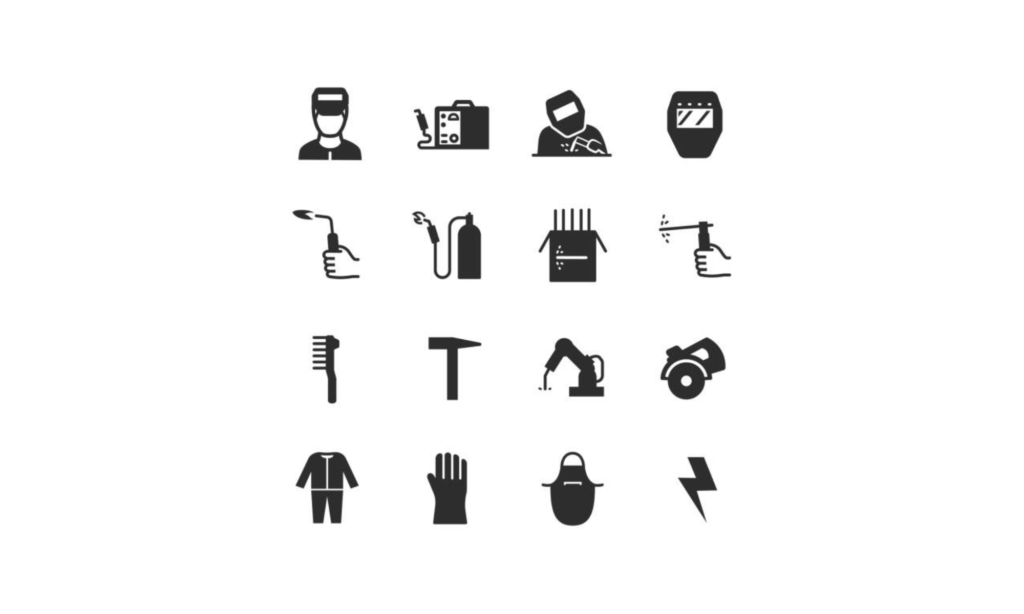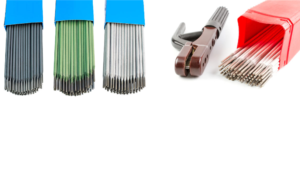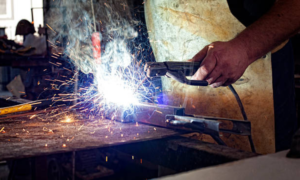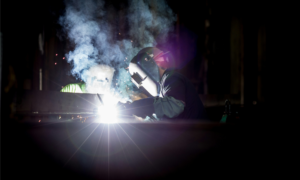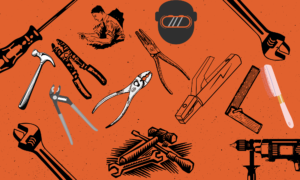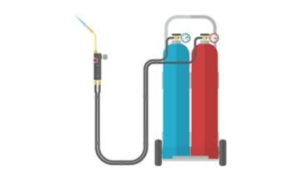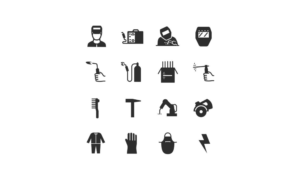Welding Shop Safety Rules: Protect Yourself From Hazards
Welding shop safety rules are critical in preventing safety hazards such as burns, eye damage, electrical shocks, cuts, and crushed toes and fingers. These hazards can be controlled with proper work practices and personal protective equipment (PPE).
It’s important to protect yourself from fumes and gases by wearing a respirator and ensuring that local exhaust or general ventilating systems are in place and arranged to keep the amount of toxic fumes, gases, or dust below the maximum allowable concentration.
We’ll provide you with an in-depth understanding of the welding shop safety rules that you must follow to protect yourself and others from harm. We’ll discuss welding hazards, dos and don’ts inside the welding shop, and the OSHA standards for welding safety. So keep reading to ensure that you stay safe while welding.
Introduction To Welding Shop Safety Rules
To ensure safety in a welding shop, workers must wear appropriate personal protective equipment (PPE), such as helmets and eye protection gear, to avoid burns and eye damage. The use of a local exhaust or ventilation system can also prevent the inhalation of toxic fumes, gases, and dust.
Industrial or hobbyist welders must follow specific safety guidelines included in the OSHA standard to avoid accidents.
Welding is a process that requires the use of heat and high energy to join two materials together. As with any process that involves high energy and heat, it is important to ensure that safety is given top priority. Welding shop safety rules are designed to prevent accidents and ensure the safety of the welders and other employees who work in the welding shop. In this article, we will discuss the importance of welding shop safety, risk factors of welding operations, and precautions that should be taken to ensure the safety of all individuals who work in a welding shop.
Importance Of Welding Shop Safety
The importance of welding shop safety cannot be overstated. Welding is a hazardous activity that involves high-temperature flames, sparks, and potentially harmful gases and fumes. Welders are at risk of sustaining burns, eye damage, electrical shock, cuts, and crushed toes and fingers, among other injuries. Failure to follow proper safety procedures and guidelines may result in injury, permanent disability, property damage, and even death. The financial implications of such accidents can be significant for both employees and employers. Therefore, it is essential to establish and maintain a strong safety culture in a welding shop.
Risk Factors Of Welding Operations
Welding operations pose significant risks to the health and safety of those involved in the process. Some of the common risk factors include:
- Exposure to potentially harmful fumes and gases
- Heat and fire hazards
- Electrical hazards
In addition to the above hazards, there is also the risk of slips and falls, eye injuries, and skin damage due to exposure to UV radiation. It is essential to identify and assess all the risk factors associated with welding operations and implement mitigation measures to control these risks. The following are some of the precautions that should be taken by the welders and others who work in a welding shop:
- Always wear proper personal protective equipment (PPE), such as welding helmets, gloves, safety glasses, and clothing that is flame-resistant.
- Ensure that the welding equipment is correctly maintained and inspected according to the manufacturer’s specifications.
- Use a suitable ventilation system to control exposure to welding fumes and gases.
- Ensure the welding area is free from flammable materials and that all fire extinguishers are functional and readily available.
By following the above precautions and implementing a strong safety culture in the welding shop, employees can create a safe working environment, minimize accidents and injuries, and improve productivity.
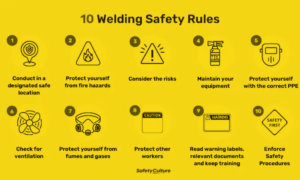
Protective Gear For Welding Shop Safety
Protective gear is essential for ensuring welding shop safety. This includes wearing appropriate eye and head protection gear like helmets and goggles, as well as flame-resistant clothing and gloves. Good ventilation systems and respirators can also protect workers from breathing in hazardous fumes and gases.
Protective Gear for Welding Shop Safety: Welding shop safety rules are not only important but can save a welder’s life. Therefore, it is essential to follow the guidelines while working in a welding shop. Protective gear is one of the most important aspects of welding shop safety, and it cannot be overlooked. Welders should wear the appropriate protective gear to prevent accidents and injuries. In this section, we will discuss the importance of protective gear, types of protective gear, and proper use of protective gear.
Importance of Protective Gear: To prevent injuries from welding, it is important to understand the importance of protective gear. Wearing suitable protective gear can safeguard welders from hazardous exposure to heat, intense light, and flying debris. When combined with caution and safe work practices, the appropriate protective gear can reduce the risk of injury significantly. Welders should always wear the right protective gear while in the welding shop. Types of Protective Gear: Different types of protective gear are necessary for welding shop safety.
The following table highlights some common protective gear items required for welders: | Protective Gear | Purpose | | — | — | | Welding helmet | Protect eyes and face from flying debris and bright light. | | Welding gloves | Protect hands and fingers from burns, cuts, and radiation. | | Welding apron or jacket | Protect the body from welding spatters, sparks, and high temperatures. | | Safety glasses or goggles | Provide eye protection from dust, debris, and welding flash. | | Respirator or face mask | Protect from inhaling toxic fumes and gases. Welding boots or shoes | Protect feet from burns, slips, and falling objects. | Proper Use of Protective Gear: Welders must wear protective gear correctly to ensure maximum safety.
The following are essential guidelines for proper use of protective gear: – Always wear the correct protective gear for the type of welding being performed. – Replace any protective gear that is damaged or worn out. – Ensure that the welding helmet is correctly positioned and secured. – Wear eye protection while welding, even if using a welding helmet with a face shield. – Use respirators or face masks to protect from breathing in toxic fumes and gases. Keep the work area clean and decluttered.
Never wear loose or synthetic clothing that can catch fire. In conclusion, using protective gear is crucial in ensuring welding shop safety. Welders must wear the appropriate protective gear to prevent accidents and injuries. Protective gear such as welding helmets, gloves, aprons or jackets, safety glasses or goggles, respirators, and boots or shoes should be used in conjunction with safe work practices to ensure maximum welder protection. Always prioritize safety in any welding shop to prevent harm and injuries.
Safety Precautions For Welding Shop
When it comes to welding shop safety, it is crucial to take some precautions to prevent accidents. Workers should wear the appropriate personal protective equipment (PPE), such as welding helmets, eye protection gear, and flame-resistant clothing. Local exhaust or general ventilating systems are also needed to control toxic fumes, gases, or dust.
Additionally, proper work practices, such as inspecting electrode holders before use can help avoid hazards.
As with any industrial environment, safety precautions are critical in a welding shop to ensure the security of workers and the workplace. Hot work, fire hazards, and electrical equipment risks are some of the potential hazards associated with welding operations. Therefore, it is crucial to follow the safety guidelines and procedures to avoid accidents and injuries. This article will highlight the most critical safety precautions for welding shops, including handling hot work, ventilation, fire safety, using electrical equipment, preventing welding fumes, and dealing with emergencies.
Importance Of Safety Precautions
Taking precautions while carrying out welding work is crucial to prevent accidents and hazards that can cause harm to people, machines, or the environment. It is essential to protect workers with personal protective equipment (PPE) and follow best practices related to welding, such as avoiding wet conditions, wearing gloves, and maintaining tools correctly. Employers should provide training, educate employees on safety culture, and ensure compliance with safety standards and regulations associated with welding operations.
Handling Of Hot Work
Welding involves high temperatures, which brings the risk of burns and injuries. Hot work operations also present the potential for fire and explosion, especially if flammable or explosive materials are nearby. Welders must use PPE such as heat-resistant gloves, gauntlets, and aprons, as well as fire-resistant clothing and footwear. They must also watch out for any flammable materials in the area and remove them safely before starting welding work.
Ventilation And Air Quality
The welding process emits gases, fumes, and particles that can be hazardous if inhaled in large amounts. Proper ventilation systems, including local exhaust and general ventilation systems, must be installed to ensure that toxic substances are filtered and the air quality in the workplace is safe. Welders must wear respirators in the absence of proper ventilation. Employers must also ensure that welding workplaces are well lit to prevent accidental injuries and to allow for welding work to be carried out more safely.
Fire Safety
Fire safety is essential in welding shops because of the heat and sparks generated by welding work. Fire extinguishers must be present and regularly checked to ensure they function properly in the event of a fire. Employers must train workers on how to use fire extinguishers and make sure that they know the location of the fire extinguishers in the workplace. Additionally, flammable materials must be removed from the area before welding, and welding tools and machines must be correctly maintained to prevent breakdowns that could result in fire.
Proper Use Of Electrical Equipment
Welding machines and equipment require electrical power for operation. Electrical current can be dangerous if not used properly and precautions not taken. Thus, qualified technicians should handle welding equipment to avoid electrical hazards such as electrical shock, short circuits, and electrical fires. Wiring and cords must be correctly grounded, and welding machines must operate within specific voltage ranges indicated on the machine.
Preventing Welding Fumes
Welding fumes can be hazardous if inhaled, causing respiratory problems and other health hazards. Employers must provide protective equipment, such as respirators, and also implement measures to capture and extract welding fumes before they disperse throughout the workplace. Proper ventilation systems can also help to keep the level of welding fumes and gases below the maximum allowable concentration.
Dealing With Emergencies
Emergencies can occur at any time in a welding shop, and it is vital to handle them correctly to minimize the extent of damage or injury. First aid kits should be present, and employees should know the correct procedures and protocols to follow in the event of an emergency. Employers need to post emergency exit routes conspicuously, and employees must know how to evacuate the site during an emergency.
In conclusion, safety precautions in welding shops must be taken seriously to avoid accidents and hazards that could cause severe injuries or loss of life. Employers must ensure that the required safety guidelines, such as handling hot work, ventilation, fire safety, and dealing with emergencies, are in place and that employees are trained on safety measures before starting work. By adhering to best practices and standards, welding operations can be carried out safely and effectively.
Training On Welding Shop Safety Rules
Training on Welding Shop Safety Rules is essential for all workers in welding shops to ensure their safety and to protect them from the hazards of welding. This training covers the basic safety requirements, the dos and don’ts inside the welding shop, and the OSHA standards for welding safety.
By following these rules, workers can prevent burns, eye damage, electrical shock, cuts, and crushed toes and fingers while working in the welding shop.
Importance Of Training
Training is an essential aspect of ensuring safety in a welding shop. The primary goal of training is to ensure that all employees working in the welding shop have the necessary knowledge and skills to work safely and efficiently. Proper training will help workers in identifying hazards and unsafe practices, which can cause injuries or accidents. It’s crucial to understand that training should be an on-going process and not just a one-time event.
In-house Training Programs
In-house training programs are usually the first line of defense for worker safety in a welding shop. The advantage of in-house training is that it can be tailored specifically to a particular shop and its unique hazards. In-house training can also be more cost-effective than external training programs. This training can be conducted by qualified personnel who are knowledgeable in welding safety procedures. This type of training often includes site-specific instructions and hands-on welding.
External Training Programs
External training programs are usually conducted by professional organizations or experts in welding safety; these programs usually have a more comprehensive approach to safety and have more time to cover multiple topics. Additionally, external programs will share valuable insights and training that may not be available in-house. This type of training will give workers a certificate of completion that can benefit them in their careers and is useful in helping businesses maintain OSHA compliance. In conclusion, Training on Welding Shop Safety Rules is crucial to ensuring the safety of workers in the welding shop.
With proper training, workers will be informed on the hazards associated with welding, and safe procedures for welding. Businesses should continually ensure that all employees working in the welding shop have the necessary training to remain safe at all times.
Compliance With Osha Standards
Compliance with OSHA standards is crucial for welding shop safety. Proper work practices and personal protective equipment (PPE) can prevent safety hazards such as burns, eye damage, electrical shock, cuts, and crushed toes and fingers. Welders should also protect themselves from breathing in harmful substances by using local exhaust or general ventilating systems and wearing respirators if necessary.
Overview Of Osha Standards
When it comes to welding shop safety, compliance with Occupational Safety and Health Administration (OSHA) standards is crucial. OSHA provides guidelines and regulations for employers to ensure that the workplace is safe and free from hazards. Welding operations are considered high-risk activities and have many safety hazards, including burns, eye damage, electrical shock, cuts, and crushed toes and fingers. OSHA has established standards to prevent these hazards and ensure the safety of workers.
Requirements For Ppe
Personal protective equipment (PPE) is necessary to protect workers from welding hazards. OSHA requires employers to provide and maintain appropriate PPE for their workers. Welding helmets and eye protection gear like goggles protect workers’ eyes and head from hot slag, sparks, intense light, and chemical burns. Flame-resistant clothing should be worn as a base, such as denim pants and a tightly woven shirt. On top, leather jackets and aprons provide additional protection. Gloves and boots with steel toes should also be worn to prevent burns and crushed limbs.

Requirements For Welding Processes
Welding operations require proper ventilation to prevent toxic fumes and gases from accumulating. Local exhaust or general ventilating systems should be provided and arranged to keep the amount of toxic substances below the maximum allowable concentration. Welders should wear a respirator if necessary to protect themselves from breathing in harmful substances. Additionally, proper work practices should be followed to prevent burns and electrical shocks. Welding machines and cables should be properly grounded to prevent shocks. Helpers or attendants should also be provided with proper eye protection during welding or cutting operations.
Osha Inspection And Compliance
OSHA conducts inspections to ensure employers comply with regulations and provide a safe working environment for their employees. Employers are required to keep records of injuries, accidents, and their plans to prevent such hazards. Failure to comply with OSHA regulations can result in fines or legal action. Compliance with OSHA standards is essential for both employers and employees to create a safe and healthy working environment. In conclusion, compliance with OSHA standards is crucial for welding shop safety.
Employers must provide proper PPE, ensure proper ventilation, and follow safe work practices to prevent hazards. Employees should also be aware of the risks associated with welding operations and take necessary precautions to prevent injuries. By complying with OSHA regulations, employers can ensure the safety and well-being of their employees while maintaining a productive and efficient workplace.
Common Welding Hazards And Their Prevention
Welding is a necessary part of many industrial and construction activities, but it also comes with numerous safety hazards. Workers need to be aware of the risks and have the necessary protective equipment to avoid accidents. Some of the most common welding hazards include electric shock and burn hazards, eye damage hazards, respiratory hazards, and struck-by and crush hazards.
Electric Shock And Burn Hazards
Working with welding equipment can result in electric shock and burn hazards. That’s why it’s important to take precautions like:
- Wearing dry gloves in good condition
- Keeping dry insulation between your body and the project and the ground
- Having a proper grounding system in place
- Ensuring all electrical equipment is properly installed and maintained
Eye Damage Hazards
Welding also poses a risk of eye damage from intense light, hot slag, and sparks. To avoid these hazards, it’s vital to:
- Wear protective eye gear like welding helmets and goggles with proper shade lenses
- Check the equipment and materials for signs of defects or damage before use
- Use screens to block or redirect welding light from reflecting into areas where it can cause injury
Respiratory Hazards
Welding fumes and gases can be very toxic. Long-term exposure can lead to respiratory problems, lung diseases, and even cancer. To reduce the risk of respiratory hazards, workers should:
- Ensure proper ventilation is available or use respiratory protection if necessary
- Use a local exhaust or general system to keep the amount of toxic fumes, gases, or dust below the maximum allowable concentration
- Avoid welding materials or paints that contain toxic chemicals or heavy metals like lead and cadmium
Struck-by And Crush Hazards
Welding equipment and materials can be very heavy and hard. This creates a danger of struck-by and crush hazards. To avoid these hazards:
- Wear personal protective equipment like hard hats, steel-toed boots, and gloves
- Ensure the work area is clean, organized, and free from clutter that can cause tripping or falling
- Use proper lifting techniques or machinery when moving heavy objects
Preventing welding hazards is a must for all welders, no matter their experience level. With the appropriate training, protective equipment, and workplace procedures in place, welders can ensure a safe and healthy work environment.
Welding Shop Safety Checklist
In a welding shop, safety measures are crucial to protect against hazards such as burns, cuts, and eye damage. It is important to wear proper personal protective equipment (PPE), use a local exhaust or general ventilating system, and inspect equipment before each use.
Additionally, an industrial ventilation system should be used for commercial applications, while sufficient ventilation with open windows and fans is recommended for hobbyists.
Welding can be a dangerous occupation and welding shop safety is a critical concern for employers and employees alike. Protecting oneself from the safety hazards of welding is a responsibility that everyone in the welding shop must take seriously. To ensure that welding shop workers adhere to safety guidelines, a welding shop safety checklist is paramount. A welding shop safety checklist is a comprehensive tool designed to help employers and employees identify potential hazards and take precautions to reduce the risk of injury. Let’s take a closer look at the components of a welding shop safety checklist and the factors to consider in designing one.
Components Of A Welding Shop Safety Checklist
A welding shop safety checklist comprises various components that aim to address different safety concerns and maintain a safe working environment that is conducive to occupational wellbeing. The essential components of a welding shop safety checklist include but are not limited to:
| Components | Description |
|---|---|
| Hazard identification | Identify all potential hazards associated with welding activities. |
| Risk assessment | Assess the level of risk associated with identified hazards. |
| Preventive measures | Specify all safety measures that should be put in place to prevent incidents and injuries. |
| Emergency procedures | Provide a detailed guide for handling an emergency if one occurs. |
| Training | Provide regular training to the workers regarding safety practices and procedures. |
Factors To Consider In Designing A Welding Shop Safety Checklist
Creating a welding shop safety checklist that is effective requires careful consideration of various factors. These factors include:
- Tools and equipment
- Materials being welded, cut or brazed
- Proper ventilation to avoid exposure to toxic fumes
- Protective clothing and equipment
- Emergency response plan
- Hazardous waste disposal
- Training and awareness of welding shop safety rules
In conclusion, a welding shop is an environment with potential risks, and a welding shop safety checklist helps to identify potential hazards and minimize risks. Welding shop safety is a shared responsibility between employers and employees. With the right safety practices in place, welding can be a safe activity that offers many benefits. Remember to always prioritize safety in the welding shop!
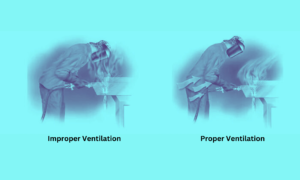
Frequently Asked Questions Of Welding Shop Safety Rules
What Are The Basic Safety Required In Welding Shop?
In welding shops, safety is crucial to avoid hazards such as burns, eye damage, electrical shock, and cuts. Workers must protect themselves from toxic fumes and gases using local exhaust or general ventilating systems and wearing respirators if necessary. They also need to use personal protective equipment such as helmets, hand shields, eye protection, gloves, and flame-resistant clothing.
Proper work practices and ventilation systems are essential to maintaining a safe and healthy working environment. Workers must inspect their equipment regularly and follow dos and don’ts to prevent accidents.
What Are The 5 Major Safety Concerns While Welding?
The five major safety concerns while welding are: proper ventilation to reduce toxic fumes, wearing a respirator, avoiding burns, eye damage, electrical shock, cuts, and crushed toes or fingers with proper work practices and personal protective equipment, following the dos and don’ts in a welding shop, and adhering to OSHA standards for welding safety such as using helmets or hand shields and proper eye protection.
What Are The Dos And Don’ts Inside The Welding Shop?
Dos inside the welding shop include wearing dry gloves, using dry insulation, and ensuring sufficient ventilation. Use an industrial ventilation system for commercial applications. Use welding helmets or hand shields for arc welding, proper eye protection for gas welding, and check electrode holders before use.
Don’t include not wearing appropriate PPE and not providing proper eye protection for helpers or attendants.
What Is The Osha Standard For Welding Safety?
According to OSHA (Occupational Safety and Health Administration) standards, workers who perform welding operations must use helmets or hand shields during all arc welding or arc cutting operations. Helpers or attendants must be provided with proper eye protection, and goggles or other suitable eye protection must be used during all gas welding or oxygen-cutting operations.
Additionally, the amount of toxic fumes, gases, or dust must be kept below the maximum allowable concentration by providing local exhaust or general ventilation systems. Proper work practices and personal protective equipment (PPE) should be used to control safety hazards such as burns, eye damage, electrical shock, cuts, and crushed toes and fingers.
Conclusion
Welding shop safety rules are crucial for the protection of the welders and everyone else in the vicinity. The basic safety measures such as wearing appropriate PPE, maintaining the welding equipment, ensuring proper ventilation, and using welding screens when necessary can go a long way in preventing accidents and injuries.
By following these guidelines and being mindful of potential hazards, welders can confidently perform their tasks, knowing that they have taken all necessary precautions to ensure their safety and well-being. Stay safe, and happy welding!

